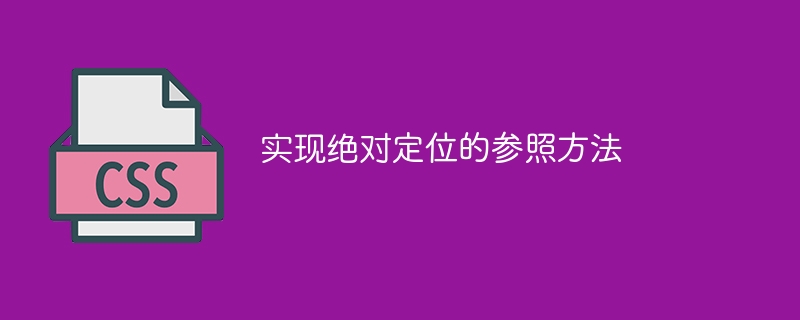◎欢迎参与讨论,请在这里发表您的看法、交流您的观点。
绝对定位参考方法的实现
ID:14621 / 打印
实现绝对定位的参照方法,需要具体代码示例
随着Web开发的不断发展,对于页面布局的要求也越来越高。绝对定位是一种常用的布局方式,可以精确地指定元素在页面中的位置。本文将介绍如何通过CSS来实现绝对定位,并提供具体的代码示例。
一、理解绝对定位的基本概念
在开始编写代码之前,首先需要了解绝对定位的基本概念。在CSS中,绝对定位是相对于最近的具有定位属性(position属性不为static)的父元素来确定元素的位置。如果没有父元素具有定位属性,则元素的位置将相对于浏览器窗口进行定位。
二、基本的绝对定位代码示例
下面是一个简单的HTML结构示例:
<!DOCTYPE html> <html> <head> <style> #container { position: relative; width: 400px; height: 300px; } #box { position: absolute; top: 50px; left: 50px; width: 200px; height: 150px; background-color: red; } </style> </head> <body> <div id="container"> <div id="box"></div> </div> </body> </html>在上面的示例中,我们创建了一个父元素container和一个子元素box。父元素container使用了position: relative属性,而子元素box使用了position: absolute属性。并通过top、left、width和height属性来确定子元素box的位置和尺寸。
三、实现绝对定位的参照方法
在实际开发中,有时候需要以不同的参照物来实现绝对定位。这里将介绍两种常用的方法,一种是以父元素作为参照物,另一种是以页面的边界作为参照物。
- 以父元素作为参照物实现绝对定位
<!DOCTYPE html> <html> <head> <style> .parent { position: relative; width: 500px; height: 300px; border: 1px solid #000; } .child { position: absolute; top: 50px; left: 50px; width: 200px; height: 100px; background-color: red; } </style> </head> <body> <div class="parent"> <div class="child"></div> </div> </body> </html>在上面的代码示例中,我们创建了一个父容器parent和一个子元素child。父容器parent使用了position: relative属性,而子元素child使用了position: absolute属性。通过top和left属性来确定子元素child相对于父容器parent的位置。
- 以页面边界作为参照物实现绝对定位
<!DOCTYPE html> <html> <head> <style> .container { position: relative; width: 500px; height: 300px; border: 1px solid #000; } .box { position: absolute; top: 50px; left: calc(50% - 100px); width: 200px; height: 100px; background-color: red; } </style> </head> <body> <div class="container"> <div class="box"></div> </div> </body> </html>在上面的代码示例中,我们创建了一个容器container和一个元素box。容器container使用了position: relative属性,而元素box使用了position: absolute属性。通过top和left属性来确定元素box相对于页面边界的位置。在这个示例中,我们使用了calc()函数来实现水平居中,其中calc(50% - 100px)表示元素box的左边距离页面左边界的距离为页面宽度的50%减去box宽度的一半。
总结:
通过以上两种方法的示例,我们可以实现以父元素或页面边界为参照物来实现绝对定位。这些方法在页面布局中非常实用,可以充分发挥绝对定位的优势,精确控制元素的摆放位置。希望本文的介绍能够帮助到您。
